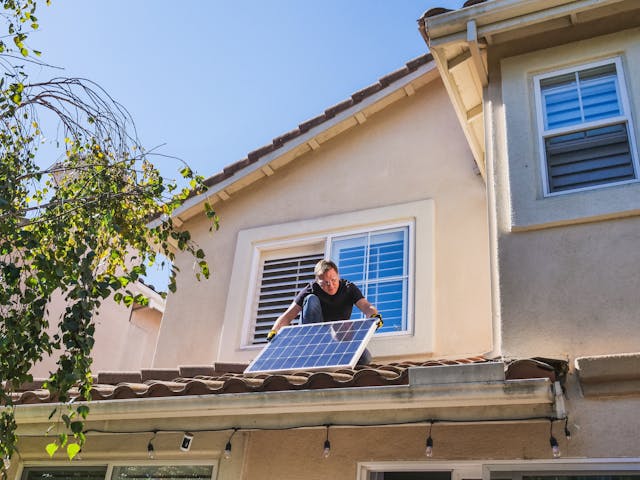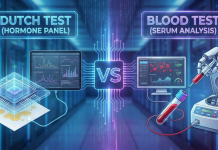In the era of rapid technological advancement and growing environmental concerns, the integration of solar power with smart home technology presents a promising path towards sustainable living. This synergy not only catalyzes the transition to renewable energy sources but also enhances home automation, offering unparalleled convenience and efficiency. As we dive deeper into this topic, we’ll explore the benefits of integrating solar power with smart home technology, the challenges faced, and the future prospects of this integration.
The Convergence of Solar Power and Smart Home Technology
Understanding the Basics
Solar power, derived from the sun’s rays, is one of the cleanest and most abundant renewable energy sources available. When harnessed correctly, it can significantly reduce the carbon footprint of residential properties. On the other hand, smart home technology refers to a suite of devices, appliances, and systems that interconnect through the internet, allowing homeowners to control various functions remotely or through automation.

The Benefits of Integration
1. Enhanced Energy Efficiency:
Integrating solar power with smart home technology creates a system where devices can operate at optimal energy efficiency. For instance, smart thermostats can adjust the temperature based on the availability of solar power, and smart solar post lights can dim when there’s ample natural sunlight.
2. Improved Energy Management:
Smart home systems can monitor and manage energy use more effectively. Homeowners can track their energy production and consumption in real-time, enabling them to make informed decisions about their energy use.
3. Increased Savings:
The initial cost of solar panels can be offset by reduced utility bills over time. When combined with smart technology, these savings can be maximized through efficient energy use and by taking advantage of off-peak rates where available.
4. Environmental Impact:
By relying on renewable energy and reducing consumption through smart devices, homeowners can significantly decrease their carbon footprint, contributing to global efforts against climate change.
Overcoming Challenges
While the integration of solar power with smart home technology is promising, there are several challenges to address:
1. High Initial Investment:
The upfront cost of solar panels and smart home devices can be prohibitive for some homeowners. However, government incentives and a decrease in technology costs over time are making it more accessible.
2. Technical Complexity:
Integrating various devices and systems can be technically challenging, requiring professional assistance or a steep learning curve for homeowners. Compatibility between different brands and technologies is also a concern.
3. Reliability and Security:
Dependence on internet connectivity raises concerns about the reliability and security of smart home systems. Protecting these systems from cyber threats is crucial.
The Future of Solar-Powered Smart Homes
The future of integrating solar power with smart home technology is bright, with innovations continuously emerging to address current challenges. We are seeing advancements in battery storage technology, allowing homes to store surplus solar energy for use during low sunlight periods. Moreover, the concept of “smart grids” is gaining traction, wherein homes not only consume energy but also contribute surplus power back to the grid, further enhancing energy efficiency and sustainability.
Artificial intelligence (AI) and machine learning (ML) are set to play a pivotal role in optimizing the performance of solar-powered smart homes. These technologies can predict energy usage patterns, control devices more efficiently, and even forecast weather conditions to adjust energy consumption accordingly.
Real-World Examples of Solar-Powered Smart Homes
As the integration of solar power with smart home technology gains momentum, several pioneering projects and real-world applications have emerged to illustrate the potential and effectiveness of this combination. For instance, Tesla’s Solar Roof integrates solar cells directly into roof tiles, a design that is both aesthetic and functional. Homeowners can control and monitor their home energy system through the Tesla app, which manages solar power generation, battery storage, and energy consumption—all in real-time. Another example is the partnership between Google Nest and SunPower, which allows homeowners to adjust their energy usage based on how much solar power their panels are generating.
These real-world applications not only showcase the practicality of combining solar power with smart home technology but also encourage broader adoption by demonstrating clear benefits and ease of use. As more such examples become public and prove successful, skepticism around the technology decreases, paving the way for a new standard in home energy systems.
Advancing Policy for Sustainable Technological Integration
Government policies and incentives play a crucial role in the adoption of innovative technologies like solar-powered smart homes. Across the globe, various governments offer tax benefits, rebates, and grants to homeowners who install solar panels and energy-efficient devices. For example, in the United States, the federal solar investment tax credit allows homeowners to deduct a significant percentage of the cost of installing a solar energy system from their federal taxes. Additionally, several states have their own incentives which further reduce costs and support energy independence.
Advocacy for more comprehensive policies that not only support the installation but also the integration of solar and smart technologies is vital. As policymakers recognize the long-term benefits of sustainable energy solutions—reduced carbon emissions, lower energy costs, increased energy independence—the more aggressively they can formulate policies to support this eco-friendly trajectory. Strategic governmental action can accelerate the adoption of these technologies, making them more mainstream and accessible.
Educating Consumers and Professionals
To fully realize the potential of solar-powered smart homes, educating both consumers and professionals in the industry is critical. Homeowners must be made aware of the financial and environmental benefits of such systems, along with insights into the operation and maintenance of these technologies. For professionals, including installers, designers, and urban planners, specialized training on the latest technological developments, installation methods, and compatibility standards is essential.
Educational initiatives can take many forms, from online courses and workshops by solar energy and smart tech companies to informational campaigns run by governmental and environmental organizations. Additionally, incorporating this new tech-savvy approach into the curricula of architectural and engineering education can prepare the next generation of professionals to design and build with sustainability in mind. By increasing awareness and knowledge, the transition to solar-powered smart homes can be smooth and swift, driving forward the green revolution in residential living.
Conclusion
The integration of solar power with smart home technology represents a significant step forward in our quest for sustainable living. While challenges remain, the potential benefits in terms of energy efficiency, cost savings, and environmental impact are undeniable. As technology advances and becomes more accessible, we can expect to see an increasing number of homes harnessing the power of the sun and smart technology to create more sustainable, efficient, and comfortable living spaces.
In this journey towards sustainable living, homeowners, technology developers, and policymakers must work together to overcome current barriers and unlock the full potential of this promising integration. With collective effort and innovation, the dream of widespread solar-powered smart homes can become a reality, paving the way for a greener and more sustainable future.






